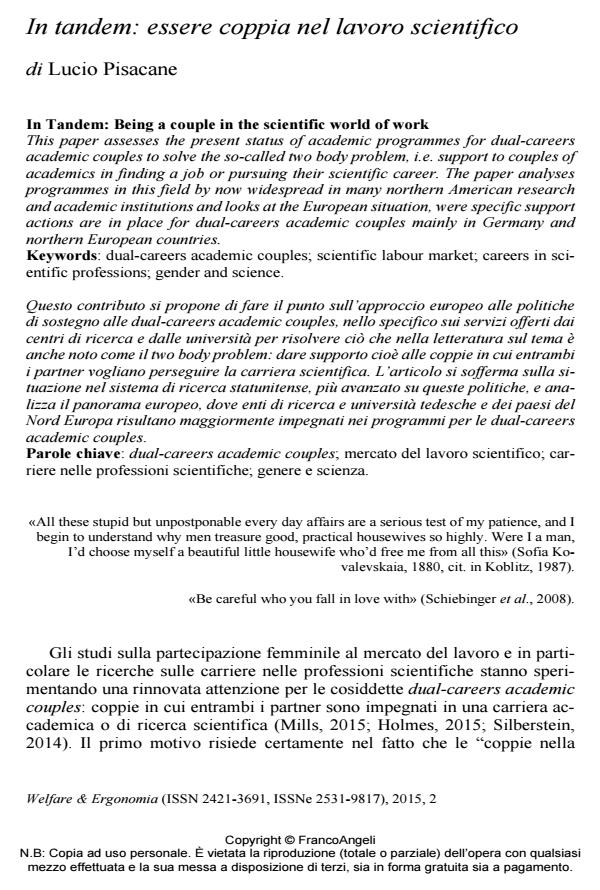In Tandem: Being a couple in the scientific world of work
Journal title WELFARE E ERGONOMIA
Author/s Lucio Pisacane
Publishing Year 2017 Issue 2015/2
Language Italian Pages 11 P. 141-151 File size 177 KB
DOI 10.3280/WE2015-002011
DOI is like a bar code for intellectual property: to have more infomation
click here
Below, you can see the article first page
If you want to buy this article in PDF format, you can do it, following the instructions to buy download credits

FrancoAngeli is member of Publishers International Linking Association, Inc (PILA), a not-for-profit association which run the CrossRef service enabling links to and from online scholarly content.
This paper assesses the present status of academic programmes for dual-careers academic couples to solve the so-called two body problem, i.e. support to couples of academics in finding a job or pursuing their scientific career. The paper analyses programmes in this field by now widespread in many northern American research and academic institutions and looks at the European situation, were specific support actions are in place for dual-careers academic couples mainly in Germany and northern European countries.
Keywords: Dual-careers academic couples; scientific labour market; careers in scientific professions; gender and science.
Lucio Pisacane, In tandem: essere coppia nel lavoro scientifico in "WELFARE E ERGONOMIA" 2/2015, pp 141-151, DOI: 10.3280/WE2015-002011